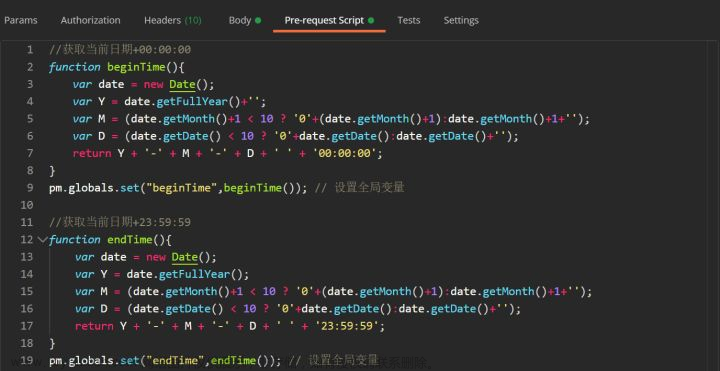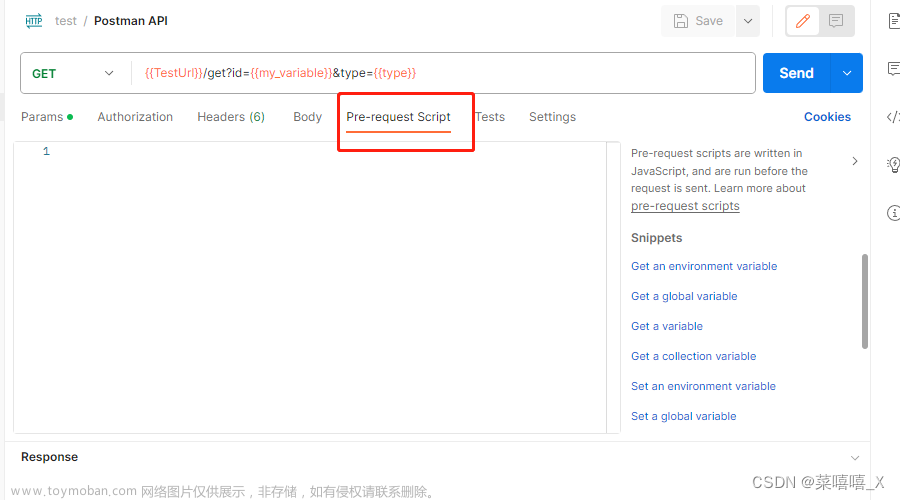es脚本(script)的简单使用
前言
最近工作需要,要求对es中的数据进行简单统计,根据笔者翻阅资料,需要用到script脚本。现有一个products索引,以其为例,数据类型映射和内容示例如下
//数据结构mapping
{
"products" : {
"mappings" : {
"properties" : {
"id" : {
"type" : "text",
"fields" : {
"keyword" : {
"type" : "keyword",
"ignore_above" : 256
}
}
},
"name" : {
"type" : "text",
"fields" : {
"keyword" : {
"type" : "keyword",
"ignore_above" : 256
}
}
},
"num" : {
"type" : "long"
},
"type" : {
"type" : "text",
"fields" : {
"keyword" : {
"type" : "keyword",
"ignore_above" : 256
}
}
}
}
}
}
}
//数据示例
{
"took" : 0,
"timed_out" : false,
"_shards" : {
"total" : 1,
"successful" : 1,
"skipped" : 0,
"failed" : 0
},
"hits" : {
"total" : {
"value" : 100,
"relation" : "eq"
},
"max_score" : 1.0,
"hits" : [
{
"_index" : "products",
"_type" : "_doc",
"_id" : "1d47cd3b9a444ae99763f7f84b954f85",
"_score" : 1.0,
"_source" : {
"id" : "1d47cd3b9a444ae99763f7f84b954f85", //id为简单的去掉-的UUID
"name" : "商品0", //商品名称
"num" : 2, //商品数量
"type" : "1" //商品类型,有“1”“2”“3”“4”共四种
}
}
]
}
}
需求说明
对其中的内容进行简单统计:首先根据type进行分组,接着统计不同type中商品数量大于等于10和小于10的商品的数量文章来源:https://www.toymoban.com/news/detail-508725.html
DSL
GET products/_search
{
"size": 0,
"aggs": { //第一层聚合,用于对type进行分组
"typeCount": {
"terms": {
"field": "type.keyword", //type是text类型,不可以用于聚合,根据上面的mapping,它的keyword属性的类型是keyword,可以聚合
"size": 100
},
"aggs": { //第二层聚合,用于将之前聚合结果中的每一个桶(分组)中大于等于10和小于10的区分开
"t1": {
"terms": {
"script": { //这里使用脚本,内部除了source以外,可以增加一个属性lang,默认是painless
"source": """ //多行的script用一对三个双引号包裹起来,单行的直接用一对单个双引号即可
if(doc['num'].value >= 10) { //注意num是long类型,所以可以直接用,如果是字符串,需要是keyword类型
return '大于等于10' //return的语句得到的结果会作为分组后的key
}
return '小于10'
"""
}
}
}
}
}
}
}
结果如下:文章来源地址https://www.toymoban.com/news/detail-508725.html
{
"took" : 1,
"timed_out" : false,
"_shards" : {
"total" : 1,
"successful" : 1,
"skipped" : 0,
"failed" : 0
},
"hits" : {
"total" : {
"value" : 100,
"relation" : "eq"
},
"max_score" : null,
"hits" : [ ]
},
"aggregations" : {
"typeCount" : {
"doc_count_error_upper_bound" : 0,
"sum_other_doc_count" : 0,
"buckets" : [
{
"key" : "4",
"doc_count" : 31,
"t1" : {
"doc_count_error_upper_bound" : 0,
"sum_other_doc_count" : 0,
"buckets" : [
{
"key" : "大于等于10",
"doc_count" : 17
},
{
"key" : "小于10",
"doc_count" : 14
}
]
}
},
{
"key" : "2",
"doc_count" : 24,
"t1" : {
"doc_count_error_upper_bound" : 0,
"sum_other_doc_count" : 0,
"buckets" : [
{
"key" : "小于10",
"doc_count" : 13
},
{
"key" : "大于等于10",
"doc_count" : 11
}
]
}
},
{
"key" : "1",
"doc_count" : 23,
"t1" : {
"doc_count_error_upper_bound" : 0,
"sum_other_doc_count" : 0,
"buckets" : [
{
"key" : "小于10",
"doc_count" : 14
},
{
"key" : "大于等于10",
"doc_count" : 9
}
]
}
},
{
"key" : "3",
"doc_count" : 22,
"t1" : {
"doc_count_error_upper_bound" : 0,
"sum_other_doc_count" : 0,
"buckets" : [
{
"key" : "大于等于10",
"doc_count" : 18
},
{
"key" : "小于10",
"doc_count" : 4
}
]
}
}
]
}
}
}
到了这里,关于es脚本(script)的简单使用的文章就介绍完了。如果您还想了解更多内容,请在右上角搜索TOY模板网以前的文章或继续浏览下面的相关文章,希望大家以后多多支持TOY模板网!









